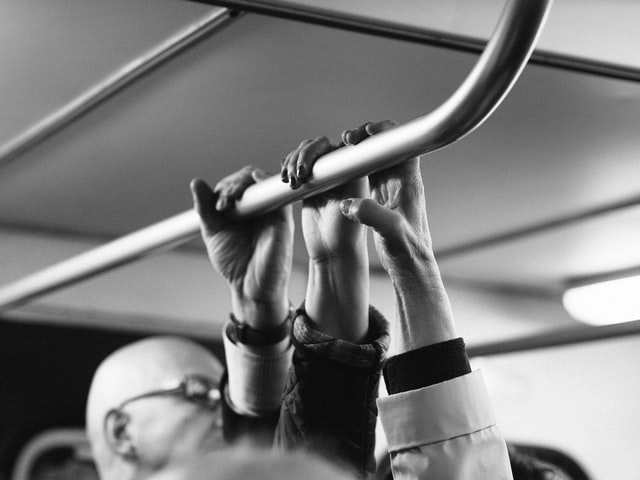
In many countries, lockdown measures have been going on for a few weeks. Now it is time to devise an exit strategy that prevents economic collapse, while at the same time minimizing risks to workers’ health. This requires at least some estimates of: 1. how many jobs can be “safely” carried out even under lockdown; 2. how many additional jobs could be activated as soon as the most severe restrictions to mobility are lifted; 3. how many of these “safe” jobs are essential in fighting Covid-19.
- In most countries, the share of workers covered by remote-working arrangements in normal times is below 10%. But the crucial issue is how many jobs can potentially be carried out remotely. Using information from the US-based O-Net classification, describing the content of 968 occupations, we assess that the share of jobs that can be carried out from home ranges from 24% in Italy, to 28% in France and Germany, up to 32% in the UK. These are mainly service sector jobs like teachers, engineers, lawyers, and architects. Only 14% of all jobs in manufacturing, and 7% of jobs in construction, belong to this category.
- As soon as the most restrictive confinement measures are lifted, a wider range of jobs will be possible, especially those involving limited mobility from home and little or no personal interactions (e.g. veterinarians, jewellers, chemists, and plumbers). Under these assumptions, the share of jobs that can be “safely” reactivated increases up to 48% in most larger European countries.
- Unfortunately, the fraction of “safe” jobs is low in most of the anti-Covid strategic industries that work as suppliers to the health sector. Scaling up “safe” production in these industries requires reconversion of assembly lines that currently produce other goods and further investment in automation. Ironically, the robots and machines accused of “destroying jobs” could help preserve jobs in essential industries. A recent survey in Italy suggests that about 20% of manufacturing firms that produce equipment for the health sector use robots. More data are required on the speed at which investments in automation or other forms of reorganization of production lines are being or could be implemented.
Some have suggested that we should prioritize young workers returning to work, as they have a lower risk of developing severe complications from Covid-19. Unfortunately, only 25% of “unsafe” jobs are currently held by workers aged less than 35; and in Italy 60% of these workers still live with their parents or older relatives. Hence only about 10% of unsafe jobs can be reactivated by young workers without running the risks of contaminating their older relatives (unless we find a way to separate families, of course, which seems unlikely). Moreover, young people are over-represented in occupations that can be carried out remotely. So we have a mismatch issue here: we would like the elderly to have jobs that can be carried out from home, rather than the young. One possibility could be to mobilize workers who are now in short-time work or receiving temporary unemployment benefits, granting them the right to go back to their former job.
The main point here is that it is essential that we think about an “exit strategy” from lockdowns, one that eases the transition back to “normal” economic activity while at the same time minimizing the risk of additional deaths and hospitalizations.
© Tito Boeri, Alessandro Caiumi, and Marco Paccagnella
Tito Boeri is Professor of Economics, and Dean for Research, Bocconi University, Italy
Alessandro Caiumi is Research Assistant at Fondazione Rodolfo Debenedetti and Teaching Assistant at Bocconi University, Italy
Marco Paccagnella is an Analyst in the OECD's Directorate for Education and Skills
Read more on the coronavirus crisis:
"Coronavirus and the labor market," by Daniel S. Hamermesh
"Fighting a coronavirus recession," by Daniel S. Hamermesh
"Pandemics and the labor market—Then and now," by Karen Clay
"Pricing the lives saved by coronavirus policies," by W. Kip Viscusi
"Health effects of the coronavirus recession," by Christopher J. Ruhm
"The long-term consequences of missing a term of school," by Simon Burgess and Hans Sievertsen
"Coronavirus, telecommuting, and the labor market," by Nikos Askitas
"Expectations about Covid-19 social-distancing measures in Italy and their impact on compliance," by Guglielmo Briscese, Nicola Lacetera, Mario Macis, and Mirco Tonin
"The coronavirus crisis and the next generation," by Bart Cockx
"Korea: A paragon of dealing with coronavirus," by Sok Chul Hong
"Economic implications of postponing the Tokyo 2020 Olympic Games," by Peter J. Sloane
"The sudden growth of employee autonomy during the coronavirus lockdown," by Elisa Gerten and Michael Beckmann
Please note:
We recognize that IZA World of Labor articles may prompt discussion and possibly controversy. Opinion pieces, such as the one above, capture ideas and debates concisely, and anchor them with real-world examples. Opinions stated here do not necessarily reflect those of the IZA.